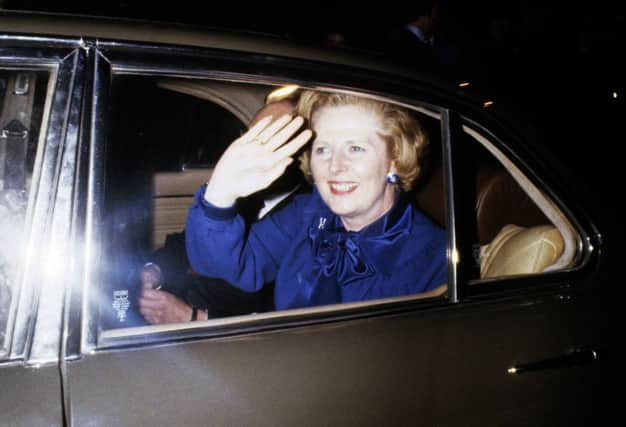Sleeping PM had special headrest in her Daimler


Officials became so concerned at her habit of catnapping in the back of her official Daimler that they arranged for a custom-built headrest to be fitted to protect her in the event of a sudden stop.
“I am concerned that, when the PM dozes in the official car, the design of the headrests is such that, far from supporting her head and neck, they cause her head to drop forward,” Bob Kingston at No 10 wrote to Mrs Thatcher’s private office in 1987.
Advertisement
Hide AdAdvertisement
Hide Ad“This is in itself hazardous, but when the car is braked or turned, she lifts her head very quickly, and this I am sure will one day cause at least minor injury.”
The files from the National Archive also reveal that Mrs Thatcher’s successor John Major, who suffered from an old knee injury, suggested replacing the armoured Daimler, which he found too cramped, with a “roomier” Rover.
Managers at Daimler were aghast when they heard the suggestion, with Gavin Thompson at Jaguar Daimler warning a sympathetic MP that it would deal a “catastrophic blow” to the company.
“The popular press would have a field day. Everybody in the country and around the world has become used to seeing our Prime Minister in a Daimler,” he wrote.
Advertisement
Hide AdAdvertisement
Hide AdRolls-Royce, sensing an opportunity, wrote to No 10 offering up to three Bentleys at a “nominal” price of £10,000 each – compared with a list price of £80,000 – plus £70,000 for the cost of armouring.
“Our cars are exceptionally well suited to such use as they have plenty of interior space, can be entered and exited easily, are well suited to armouring, are capable of long-distance high-speed cruising and are, above all, essentially British in character,” wrote the marketing director, Malcolm Hart.
However, Mr Major was more concerned with comfort than class, and jumped at the prospect of a “stretched” car that “could add another four inches to its length”, the files reveal.
Robin Catford at No 10 cautioned against a Bentley. “The obvious snags are the implications of accepting a cut-price deal and the possible repercussions, in terms of the Prime Minister’s image, of moving up the quality car range. The latter has been rejected in the past: the former is likely to be a very slippery slope,” he wrote.
In the event, Mr Major decided to stick with what he had, writing in a handwritten note: “Pl(ease) express thanks but no change for now at least.”